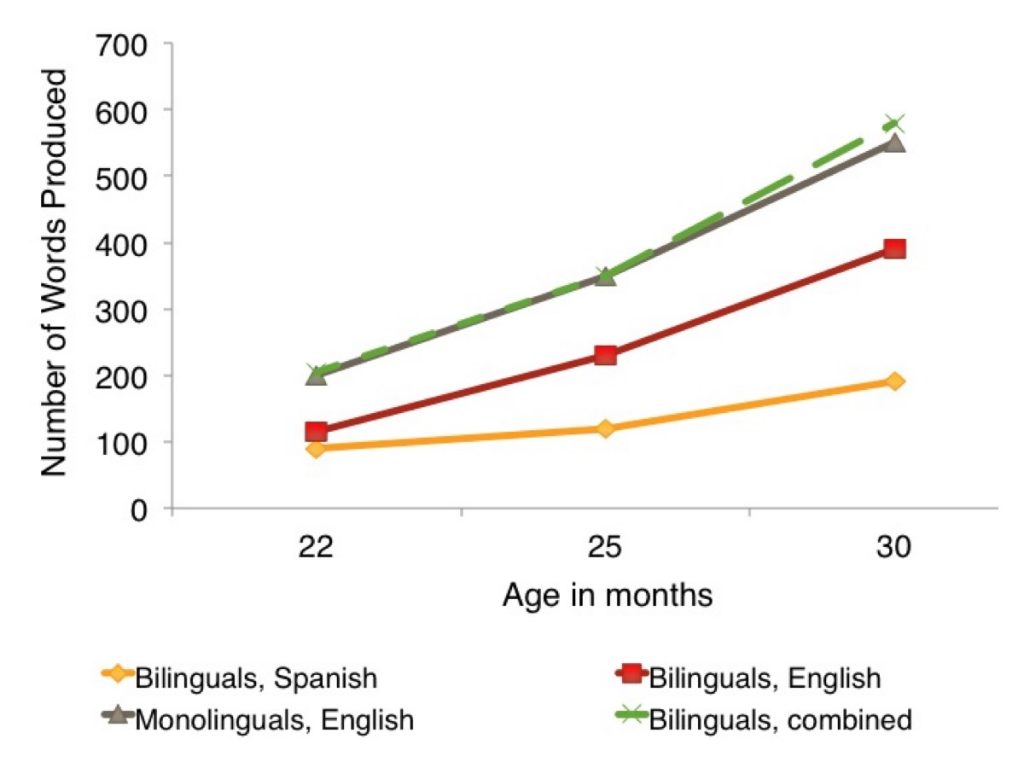
Bilingual children split their time between two languages. How does this affect their language growth?
This graph is from a study comparing bilingual and monolingual children’s vocabulary growth over time. The bilingual children were all simultaneous bilinguals, learning two languages from birth. Children’s age in months is on the bottom of the graph. On the left is the number of words children say or ‘produce.’ The yellow line shows the growth of bilingual children’s Spanish vocabulary. The red line shows the growth of bilingual children’s English vocabulary. The gray line shows monolingual children’s vocabulary growth in English.
Look at the red and yellow bilingual lines. Each line is below the gray, monolingual line. But each line only reflects part of a bilingual child’s vocabulary knowledge. What happens if we add their Spanish and English vocabulary knowledge together? The dashed green line represents the combined (Spanish+English) vocabulary size for bilingual children. The green line overlaps almost perfectly with the gray line. When we count a bilingual’s vocabulary in both languages, bilinguals and monolinguals are indistinguishable. The combined vocabulary for the average bilingual 22-month-old is the same as monolingual 22-month-olds. Bilingual children do not lag behind their monolingual peers when we include growth in both languages.
-
- Bilingual
- a person who knows and uses two languages
- Code mixing
- mixing words from different languages in the same sentence or situation
- Cognitive flexibility
- the ability to quickly switch between different concepts or rules
- Dominant language
- is the language a bilingual is most skilled at understanding and/or speaking
- Executive function
- a set of mental abilities that help us plan, focus attention, problem solve, and switch between tasks
- Language transfer
- applying the knowledge from one language to another language
- Monolingual
- a person who knows and uses a single language
- Simultaneous bilingualism
- a person learns two or more languages from birth
- Sequential bilingualism
- a person first learns one language then learns one or more languages later